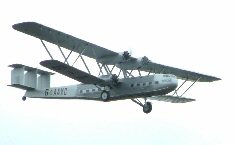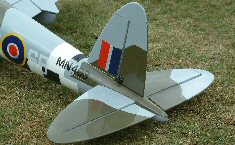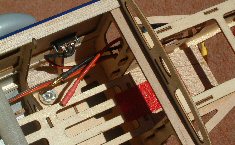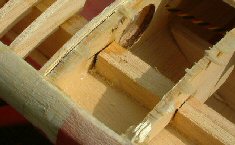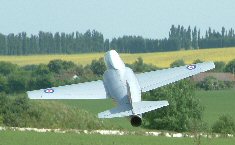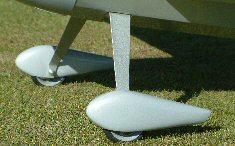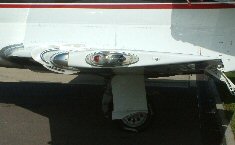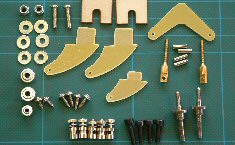|
|||
|
|
|
||
| View Shopping Cart |
| Home |
| Guides Available |
| About the Author |
| FAQs |
| Testimonials |
| Articles |
| Contact Andrew |
| Terms & Conditions |
| Mailing List |
| Links |
 |
 |
Get more articles like
this one absolutely free with every
Gibbs Guides e-magazine. Join
the mailing list!
How to avoid crashing
Part 1 - Building for Survival: The Airframe
Article by Andrew Gibbs
Crashing is clearly one of the less appealing experiences of being an aeromodeller. But are crashes an inevitability? Some modellers seem to fly their models for years with few if any mishaps, while others seem to have much worse luck.
The good news is that when we examine what causes crashes, it turns out that it's a lot less to do with luck than we might think. There's actually a lot we can do the minimise the chance of a crash. The chance of a model crashing is directly related to (i) how well it’s built; (ii) how well it’s flown and (iii) on the quality of the maintenance and repairs it receives. A model must receive adequate attention in each of these three areas if it is to have a good chance of long life span.
This first part of this article concentrates on building of the model. Model aircraft are relatively complex machines. There are generally no unnecessary parts, so every part of the machine needs to function properly for the model to be fully airworthy. The components of any electric powered model may be divided into three basic categories;
1. The Airframe
2. The Power System
3. The Control system
Let's look at each of these parts in turn, and discuss what factors can help us avoid the dreaded crash.
| For a long life span, a model must be well built, well flown and well maintained (click small images to enlarge and get more information). | Hinges must be securely attached so that there is no danger of separation (click small images to enlarge and get more information). |
The Airframe
The term ‘airframe’ refers to those parts
making up the structure of the aeroplane; wings, fuselage,
tail, control surfaces and the landing gear or undercarriage.
Clearly all models need to be strong enough to withstand the stresses of flight, and in this regard we are reliant on the designer of the model to produce a good quality design. For plan and kit built models, the strength of the glued joints is up to us. We need to select the right type of adhesive and use it properly.
| Check that all visible joints are properly glued. This ARF model was very well built. | The structure of a model must be sound. Here, the spar has been cut to clear the ribs - this was a disaster waiting to happen. |
Airframe Strength and Integrity
In the case of ARF (ARTF) models we are reliant on the
manufacturer to build the airframe with sufficient strength.
Things are much better than they were a few years ago,
but it’s still not unknown for glue joints to be
poorly made. For this reason, it’s always worth
inspecting an airframe carefully to look for any joints
that are inadequately glued. Thin or medium CA glue can
be added to any joints that are suspect. Check also for
broken components and repair these.
Since ARF models are supplied covered, not all areas will be accessible for inspection. However, it should be possible to inspect much of the fuselage interior, and at least some parts of the wings. Particular areas to check are the landing gear attachment and motor mounts. Again, things are better than they used to be but in my experience, these areas can still be weak points for some otherwise good models.
Used models should be treated with particular caution. One beautiful scale electric model I purchased some years ago had the wing spar cut away near the root area in order to clear the ribs! This disaster in waiting was only discovered because I removed the model's covering to inspect the structure after developing a suspicion about its integrity. The seller claimed the model had been flown, but if it had, he's certainly not pulled much in the way of G-forces. Fortunately, the rest of the model had been built to a good airworthy standard.
| The model must balance at a safe position. If the CG is outside safe limits, the model will be difficult or impossible to fly. | Pay particular attention to the strength of highly stressed areas such as the landing gear. |
| The presence of washout can be detected by comparing the incidence of the wing tip and root. The tip of this business jet is set at a lower angle than the wing tip. | All hardware must be fit for purpose. Replace any items which are not of good quality. |
Straight and True
As well as being strong, a model's structure also needs
to be built true to fly well. A model with a banana-shaped
fuselage will never fly very well. Warps in flying surfaces
will also spoil a model's flying qualities. the only exception
to this is the use of 'washout' which is the deliberate
and precise inclusion of a small amount of warp such that
the tip of a wing has a lower angle of attack than the
root. It is essential that both wings have the same amount
of washout. Washout will promote safe stalling behaviour,
as it encourages the wing root to stall before the wing
tip, meaning that the model is much less likely to drop
a wing and enter a roll as a result of stalling.
The opposite of washout, wash-in, where the wing tips have a higher angle of attack than the wing root is dangerous and must be avoided at all costs.
Balance Matters
A model must of course be balanced at the recommended
position. Often components can be moved within a model
to obtain the correct balance point, but if not, weight
will have to be added, usually to the nose. Don't be afraid
of adding a little weight to achieve the correct balance.
A heavy model may not fly so well, but a model with an
out of limits CG won't fly for long!
The lateral (side to side) balance of a model should also be checked. Any imbalance can be corrected with a little weight added to one wing tip.
Click here to read part 2
Get more articles like
this one absolutely free with every
Gibbs Guides e-magazine. Join
the mailing list!
